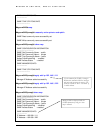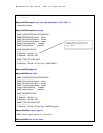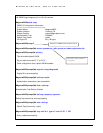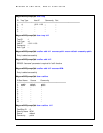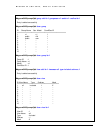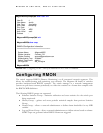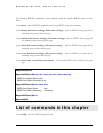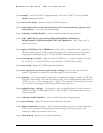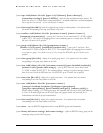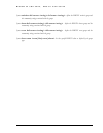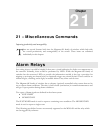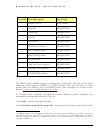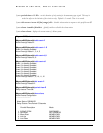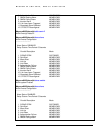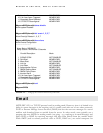
MAGNUM 6K SWITCHES, MNS-6K USER GUIDE
Syntax snmpv3 – enter the SNMP V3 configuration mode – note enable SNMP V3 by using the
“set
snmp”
command which follows
Syntax show active-snmp – shows the version of SNMP currently in use
Syntax community [write=<write community>] [read=<read community>] [trap=<trap
community>] – set the necessary community strings
Syntax authtraps <enable|disable> - enables or disables authentication traps generation
Syntax traps <add|delete> type=<Snmp|Rmon|Snmp,Rmon|Enterprise|
Snmp,Enterprise |Rmon,Enterprise|All> ip=<ipaddress> - add v1 traps as well as
define the trap receiver
Syntax mgrip <add|delete> ip=<IPaddress> - adds or deletes a management station, specified by the
IP address, which can query SNMP variables from the switch. This is done to protect the switch from
being polled by unauthorized managers. Valid for SNMP v. Maximum of five stations allowed.
Syntax set snmp type=<v1|all> - define the version of SNMP to use – the option all supports all versions
(v1, v2 and v3) – v1 restricts SNMP to v1 only. By default – SNMP v1only is enabled
Syntax show snmp – displays the SNMP configuration information
Syntax setvar [sysname|syscontact|syslocation]=<string> sets the system name, contact and
location. All parameters are optional but a user must supply at least one parameter
Syntax quickcfg - quick setup for snmpv3 configuration. It automatically configures a default VACM (view-
based access control model). This allows any manager station to access the Magnum 6K switch either via
SNMP v1, v2c or v3. The community name is “public”. This command is only intended for first time
users and values can be changed by administrators who want more strict access
Syntax engineid string=<string> - Every agent has to have an engineID (name) to be able to respond to
SNMPv3 messages. The default engine ID value is “6K_v3Engine”. This command allows the user to
change the engine ID
Syntax authtrap <enable|disable> - enables or disables authentication traps generation
Syntax show-authtrap - displays the current value of authentication trap status.
Syntax deftrap community=<string> - defines the default community string to be used when sending traps.
When user does not specify the trap community name when setting a trap station using the “trap”
command, the default trap community name is used
Syntax show-deftrap - displays the current value of default trap
253



